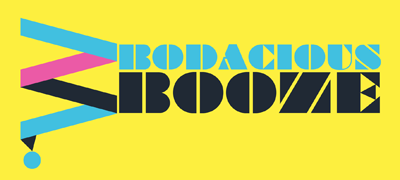I have been aging spirits at home for three years now and am on my second barrel. Currently, I’m using a 1.25 liter new-charred oak cask. It has a level-4 ‘alligator’ char.[1]
 A typical bourbon barrel is about 55 gallons. Surface area plays an important role in maturation. The larger the vessel, the more time it will take for the larger volume of liquid to interact with the surface of the barrel. A smaller barrel means that more flavor came come through in a shorter amount of time. The color, along with much of the flavor and aroma of the aged spirit comes from this interaction with the wood surface.[2]
A typical bourbon barrel is about 55 gallons. Surface area plays an important role in maturation. The larger the vessel, the more time it will take for the larger volume of liquid to interact with the surface of the barrel. A smaller barrel means that more flavor came come through in a shorter amount of time. The color, along with much of the flavor and aroma of the aged spirit comes from this interaction with the wood surface.[2]
This aquadynamic lesson has a reason – it helps to explain the power of a new charred oak barrel.
The first whiskey to go into this barrel was Buffalo Trace – a personal favorite based on its quality at its price point. The high-rye bourbon from Sazerac is already well aged[3] off the shelf, but it’s the perfect candidate for extra maturation.
I filled that brand new alligator-char barrel to the top and aged that whiskey for three months! I knew it was a little extreme, but you only get one shot at a new barrel – after that it’s a second-fill, third-fill, etc. I wanted to get an up-close and personal understanding of maturation.
Most Bourbons are the product of many different barrels aged for various lengths of time[4] — sometimes with slightly different mash bills. Even small batch Bourbons can have thousands of barrels blended together before bottling.
 It’s common for Warehouse Managers to keep extra-mature barrels – aged for 15-25 years or longer – stowed away in a sweet spot in the rick house. This gives the Master Blender a powerful tool during the blending stage and is a common tool for those whiskey makers across sub-categories: Bourbon, blended and Single Malt Scotch, blended and Single Pot Irish and Single Malt and blended Japanese whiskies.
It’s common for Warehouse Managers to keep extra-mature barrels – aged for 15-25 years or longer – stowed away in a sweet spot in the rick house. This gives the Master Blender a powerful tool during the blending stage and is a common tool for those whiskey makers across sub-categories: Bourbon, blended and Single Malt Scotch, blended and Single Pot Irish and Single Malt and blended Japanese whiskies.
The whiskey that came out of my small barrel was dark – tobacco spittoon black – and had the deep, rich tobacco flavor. It is intense on its own.
Nose: oak, butter scotch and caramel, tobacco leaf.
Tongue: molasses, tobacco leaf, black pepper, almonds, rye.
Finish: honey, stone fruit cherry, lingering rye notes.
When mixed with other, under-aged spirits, this whiskey gives a dark complexity and lingering finish to the final product.
At the writing oft his post, this inaugural whiskey was at the end it’s lifespan. But fear not! This last little swallow will live on. I’m blending the last 4 ounces into the Wild Turkey 101 that has been in the barrel for two months now.
Viva l’esprit!
[1] Char describes the level of flame the inside of the barrel gets. No. 1 is the next level up from toasted – less exposure to flame means very little charcoal on the wood. Four is the most active char – the inside is charred like a piece of burnt wood, and the bumpy dark wood appearance gives it the Alligator nickname.
[2] It does not mean that spirit aged in a smaller barrel matures ‘faster’ than in large barrel. The smaller barrel’s surface area means more interaction with the red char layer, but the liquid tends to pick up wilder notes without the complexity found in longer aged spirits. Be wary of claims.
[3] The company does not publicly disclose its age but many guess it’s aged for 3-5 years.
[4] Aged statements denote the youngest barrel in the bottle. Often there are component whiskeys that are aged much longer.
